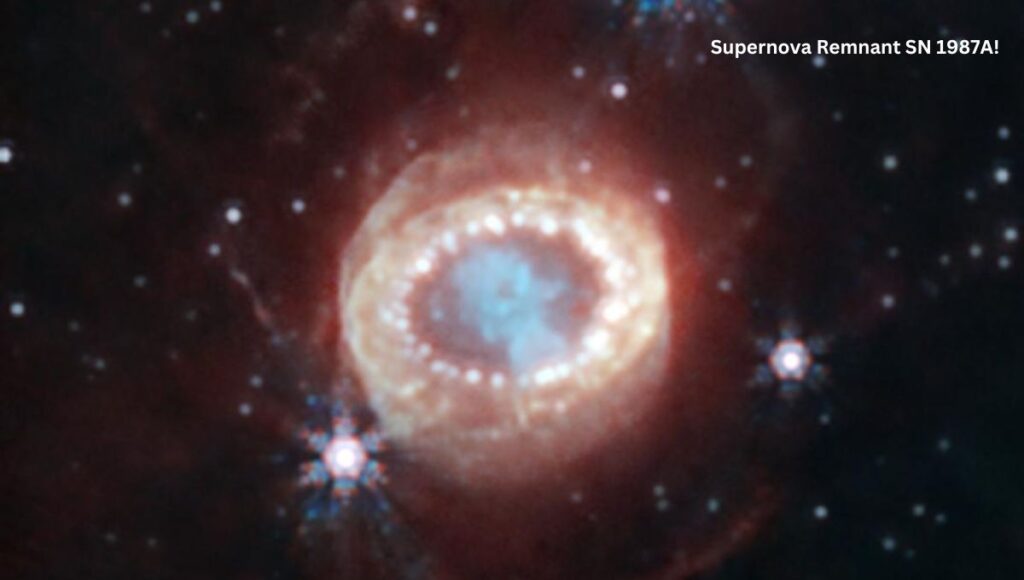The James Webb Space Telescope, operated by NASA/ESA/CSA, has recently made a significant discovery regarding a neutron star’s emission at the location of a recently observed supernova. This supernova, known as SN 1987A, took place 160,000 light-years away in the Large Magellanic Cloud and was visible from Earth in 1987, marking the first naked-eye observable supernova since 1604.
This event has provided astronomers with a rare opportunity to study the evolution of a supernova and its aftermath from its inception. SN 1987A, categorized as a type II, core-collapse supernova, was expected to leave behind either a neutron star or a black hole at its core. Previous indications of a compact object were noted, but for the first time, the high-energy emission effects from the young neutron star have been observed.

Supernovae, unfolding within hours and reaching peak brightness within months, offers a unique chance to witness astronomical processes in real-time, unlike the typically lengthy timescales involved in astronomy. Observations of SN 1987A’s visible light peak in May 1987, alongside a burst of neutrinos detected prior, provided crucial insights into core-collapse supernovae dynamics, suggesting the formation of a neutron star or black hole.
Although evidence for neutron stars in older supernova remnants existed, direct evidence from recent explosions like SN 1987A had been elusive until now. Claes Fransson of Stockholm University, lead author of the study, notes the significance of the discovery, indicating the presence of emission from the newborn compact object, likely a neutron star.
The observations were conducted using Webb’s Medium Resolution Spectrograph (MRS) mode, capturing a spectrum at each pixel of the SN 1987A remnant. Analysis revealed a strong signal of ionized argon from the ejected material’s center, corroborating the presence of a compact object.
Further observations using Webb’s NIRSpec IFU mode provided insights into more heavily ionized chemical species, reinforcing the hypothesis of a neutron star’s existence at the supernova remnant’s core. Ongoing observations planned for this year, both with Webb and ground-based telescopes, aim to deepen our understanding of SN 1987A and core-collapse supernovae in general, fostering the development of more detailed models.